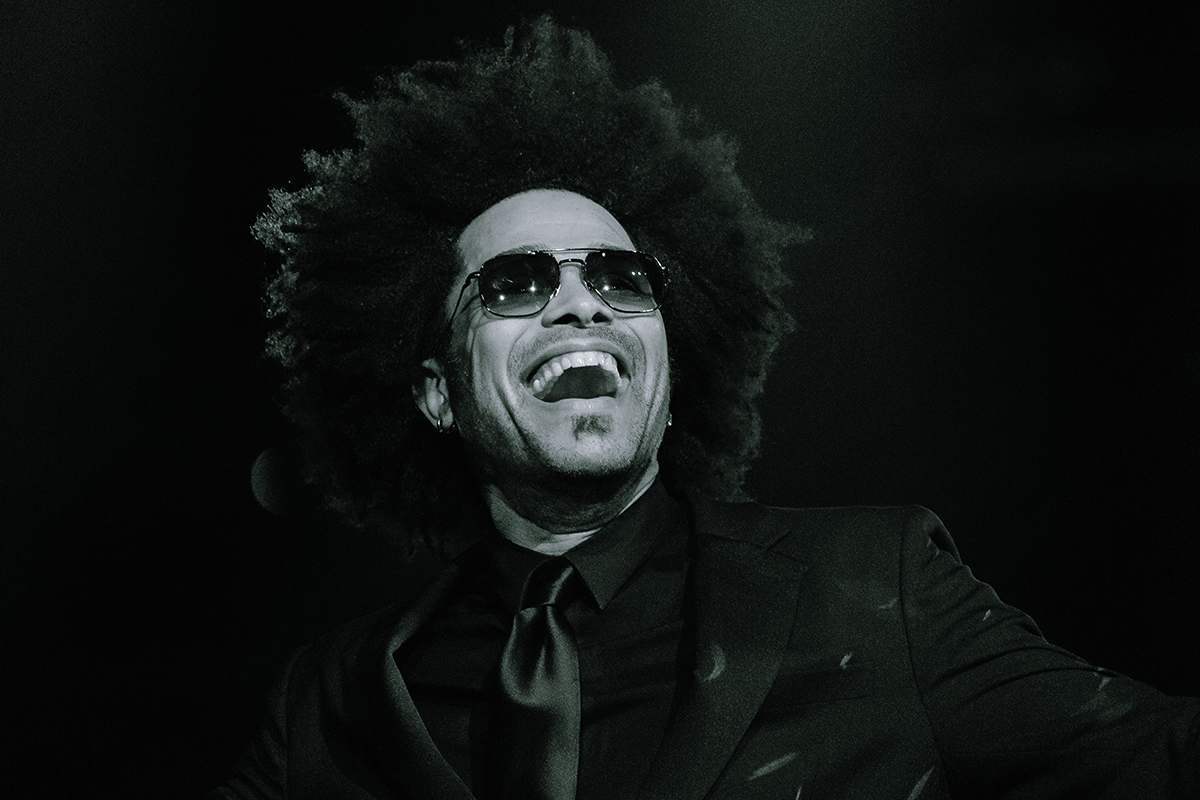Immersed in the Moment
Whether he’s photographing a superstar on stage or a local on the street with his Tamron lenses, Ricky Shoebio wants you to feel connected.
Share the article:
More Photo Tips | Video Gallery | Photo Gallery | Enewsletter sign-up
By Jenn Gidman
Images by Ricky Shoebio
Before he was a photographer and creative director, Ricky Shoebio was the executive editor of a midsized publication. When his team wanted to go beyond stock photos, he started dabbling in mobile photography, with lenses custom-made for smartphones, gradually working his way up to borrowing friends’ DSLRs. By the time he founded his Know Your Dope ad agency in 2018, he’d started experimenting with Sony mirrorless cameras.
His first major photography project with this camera system was the NBA All Star Weekend in Chicago, in February 2020—right before COVID. “I was a host, I was taking pictures, I was doing recaps,” he says. “I’d done some performance and concert photography before, but that weekend was a coming-of-age sort of weekend. I learned how to capture everything from intimate portraits to quick pics in between interviews.”
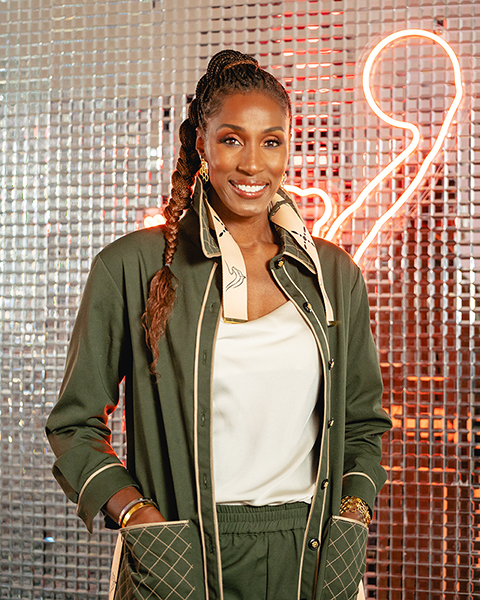
Former pro basketball player Lisa Leslie
70-180mm (73mm), F2.8, 1/400 sec., ISO 2000
Click image to view larger
Ricky used his pandemic downtime to hone his lighting and set-building skills, and now business is thriving. “We transitioned from doing product work to portrait and lifestyle photography,” he says. “The challenges of the pandemic helped me learn how to better control the situations around me more, and pushed me to learn different ways of storytelling.”
To capture his portraits, Ricky uses the Tamron 20-40mm F/2.8 Di III VXD ultra-wide-angle and 70-180mm F/2.8 Di III VXD telephoto zoom for his Sony mirrorless system. “The 70-180 is my most-trusted lens for performance photography,” he says. “It’s reliable and lightweight, and the sharpness is amazing. Plus, that F2.8 maximum aperture is a necessity when I’m shooting in the low light you’ll often find at concert venues.”
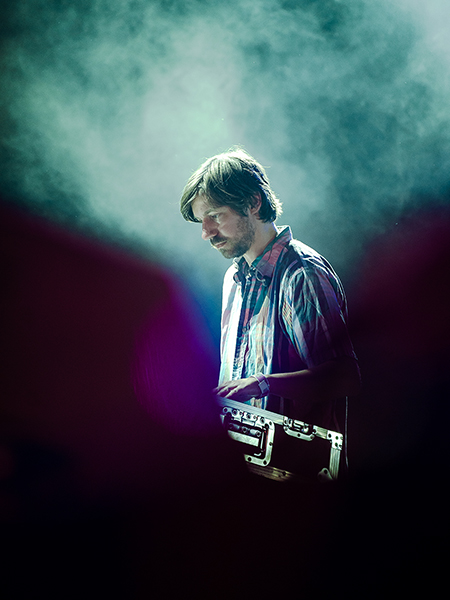
Andy Woodward, drummer for Toro Y Moi
70-180mm (180mm), F2.8, 1/500 sec., ISO 2500
Click image to view larger
The 20-40, meanwhile, is key for Ricky’s street portraits. “For me, 35mm is the sweet spot for pictures like this,” he says. “This lens is so compact and lightweight that it feels like a prime, but it’s got a versatile range that lets me hit that sweet spot, with room to play around. I’ve also started to use it for videography, and it’s phenomenal for that, too. It’s a sharp, quick, and responsive lens.”
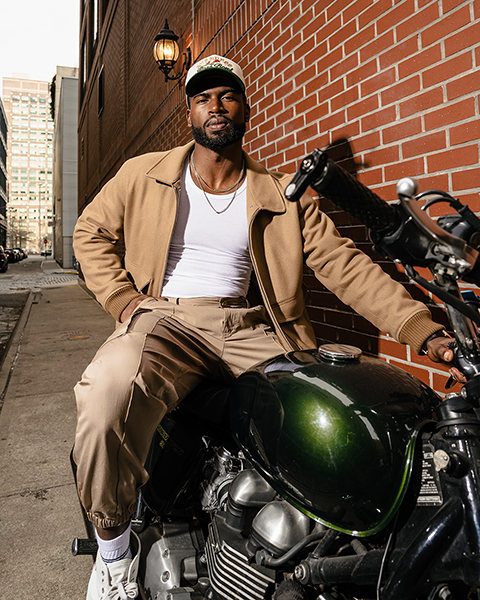
Model and actor Broderick Hunter
20-40 (20mm), F5, 1/200 sec., ISO 320
Click image to view larger
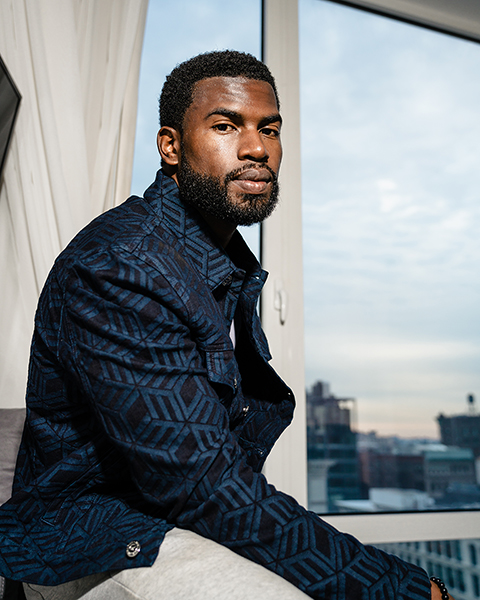
Model and actor Broderick Hunter
20-40 (29mm), F3.2, 1/250 sec., ISO 320
Click image to view larger
The New Jersey photographer’s love for photography claims its origins in cinematography—he counts the films of Quentin Tarantino, Martin Scorsese, and Wes Anderson among his favorites—so he describes his images as having an immersive feel to them. “I don’t want people to just look at one of my photos and say, ‘Oh, that’s amazing,’” he says. “I want them to feel like they were actually there.”
RICKY’S QUICK TIPS
Know the artist’s songs.
For concert photography, this has become a critical part of my process. Being familiar with a song—or even better, an entire set—is incredibly helpful. If a big riff or chorus is incoming, I’ll wait for that rise in the song, where I can expect a spike in energy and more activity onstage. The lighting technicians also often like to sync the music to the lights. My father was a musician, so I learned how to become a human metronome of sorts. I do my silent count, then take photos at the optimal moment.
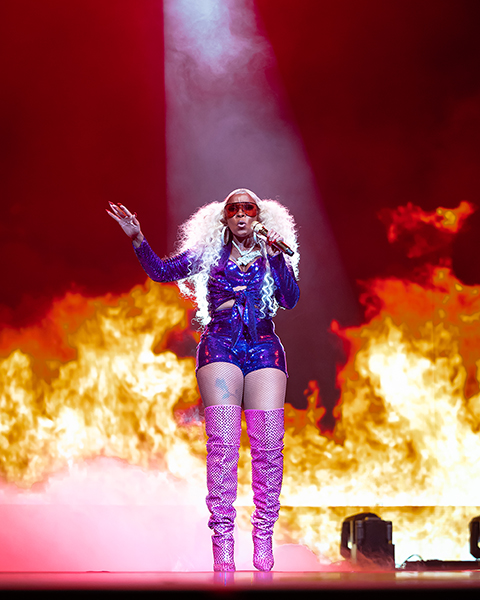
Singer Mary J. Blige
70-180mm (70mm), F2.8, 1/400 sec., ISO 2500
Click image to view larger
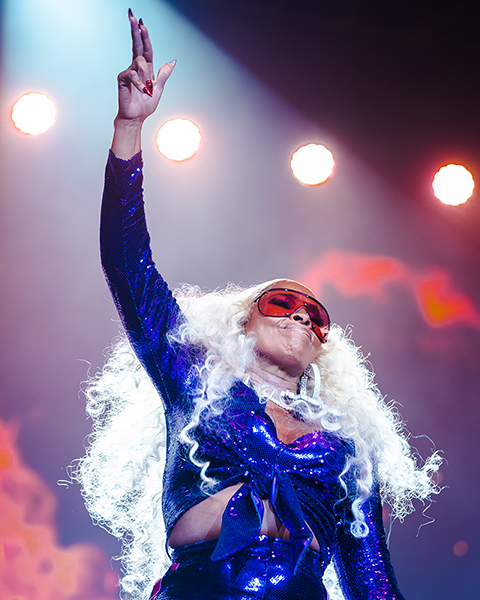
Singer Mary J. Blige
70-180mm (107mm), F2.8, 1/400 sec., ISO 1250
Click image to view larger
Don’t be intimidated by the talent.
I’ve had full days to photograph my subjects, and then sometimes just five to seven minutes, if they’re more high-profile. The biggest thing I try to remember: Everyone’s human. As much as I want to create a good photo, they want the same. That’s why a lot of my photo sessions involve breaking the ice and telling them if particular shots came out terrific. Encouraging and empowering clients creates a sense of trust that can only enhance your images.
Tap into the power of black and white.
I've been refining this process for a long time. I don’t want my shots to be muddy or to where the detail gets lost. I want to encompass rich blacks, which means I’ll take my time in post-processing. I’ll analyze a photo, strip it down, then build it back up again until I get the photo to where I want it.
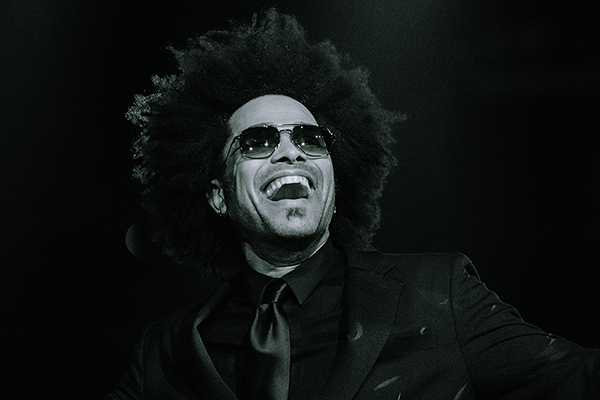
Singer Maxwell
70-180mm (180mm), F2.8, 1/500 sec., ISO 3200
Click image to view larger
Don’t obsess over the technical.
Sometimes a great photo is more about the connection you make with the viewer than perfect camera settings. When I took that image you see here of the gentleman in Chinatown, watching the Lunar New Year parade, I wasn’t even sure if it was fully in focus. But I just knew in the moment that it had a certain feeling to it, and that there would be an emotional draw for the viewer. When I looked at it later on, I knew I was right.”
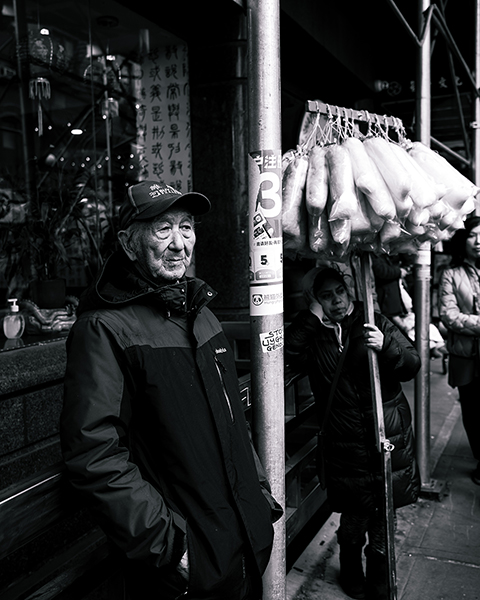
Man in New York City
20-40 (34mm), F3.5, 1/100 sec., ISO 125
Click image to view larger
To see more of Ricky Shoebio’s work, check out it out here or on his Instagram.
More Photo Tips | Watch Videos | Learn More About Tamron Lenses | Photo Gallery
